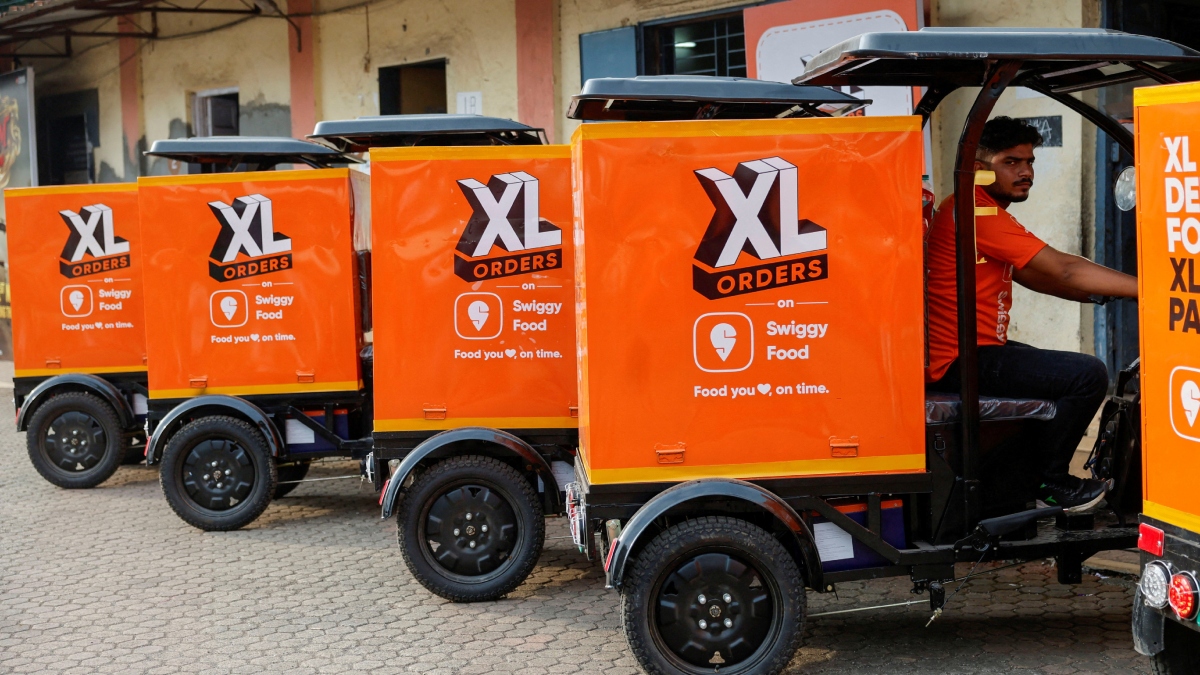Swiggy stock tumbles: From 10-minute food and groceries to 10-minute profit booking
 A Swiggy gig worker sits inside an electric three wheeler delivery scooter during a promotional event in Mumbai | Reuters
A Swiggy gig worker sits inside an electric three wheeler delivery scooter during a promotional event in Mumbai | Reuters
As positivity from the ceasefire announcement between India and Pakistan led to the massive market rally on Monday, pre-IPO Swiggy investors did not seem to have wasted any time booking profits as the lock-in period for most shareholding expired on Tuesday. This led to Swiggy shares tumbling as low as 7.33 per cent to hit ₹297, before it found some footing.
Following the listing of Swiggy on the stock market, non-promoters and pre-IPO investors had their shares locked in for a mandatory six-month period. On Monday, the period expired, making 83 per cent of Swiggy stock eligible for secondary market trading from Tuesday, May 13.
Last week, Swiggy posted its quarterly numbers in line with its peers and fellow startups/unicorns in the new wave. Swiggy Q4 net loss not only widened, but almost doubled to ₹1,081.18 crore, from ₹554.77 crore a year ago.
This was despite healthy topline growth. Operations revenue for the three-month period grew to ₹4,410 crore vs ₹3,045.5 crore a year ago. The gross order value (GOV) of its food delivery business also jumped 17.6 per cent year-on-year to ₹7,347 crore. So, what happened?
Just like almost all its peers, expenses (read: marketing, branding, offers, and so on) soared to a massive ₹5,609.6 crore during the quarter. In contrast, last year same quarter, Swiggy only burned ₹3,668 crore in total expenses.
When Swiggy posted its results, Group CEO Sriharsha Majety had reasoned such expenses to compete in a tight market and to ramp up “investments aimed at market expansion”.
But investors seem to have played it safe. More than market expansion, they have sold when the opportunity presented itself. At today’s low of ₹297 apiece, Swiggy shares have nosedived by a staggering 44 per cent year-to-date.
Business